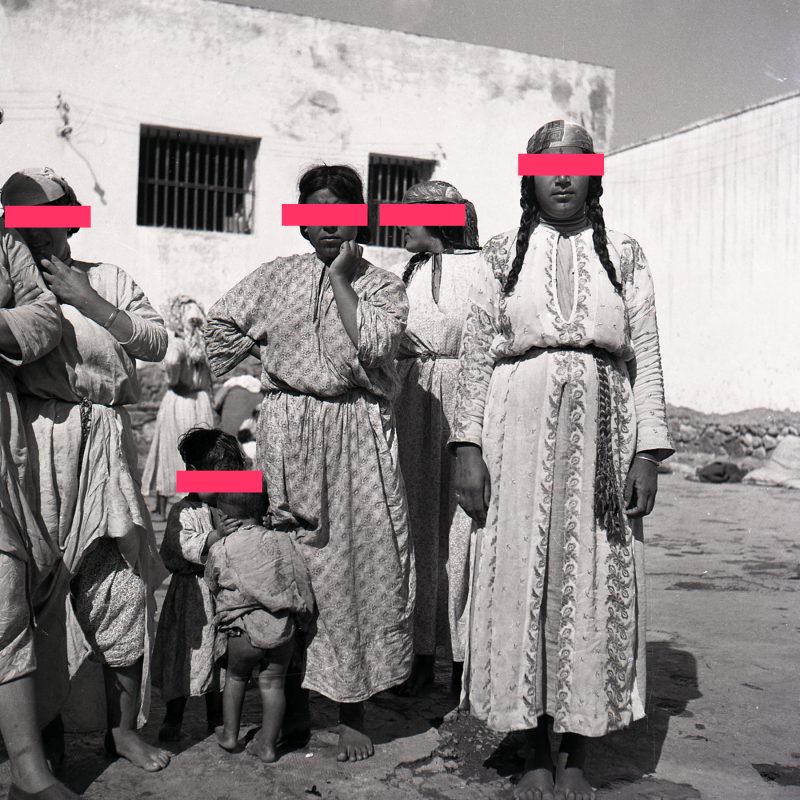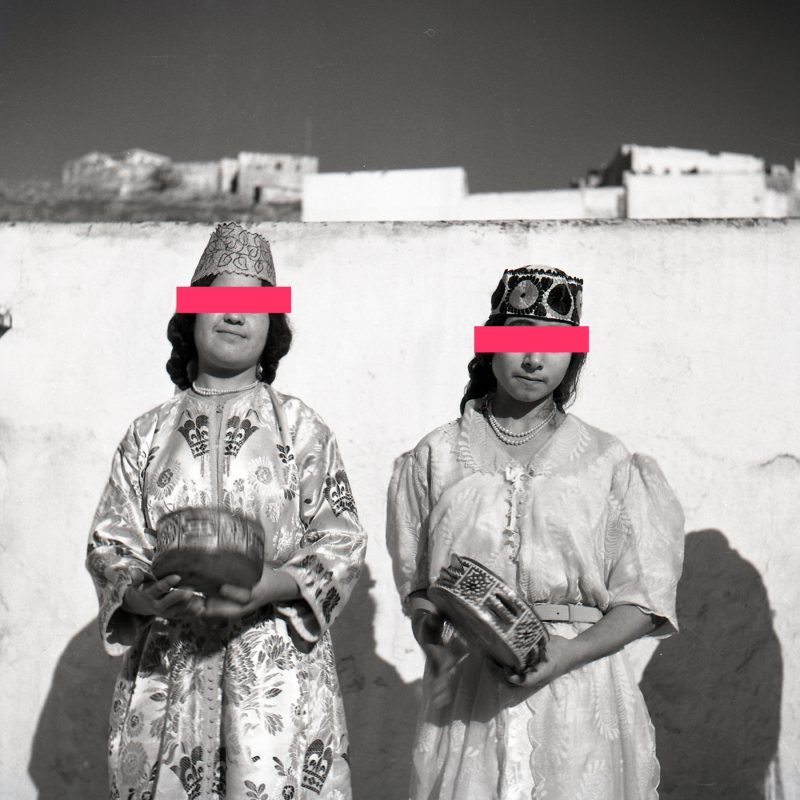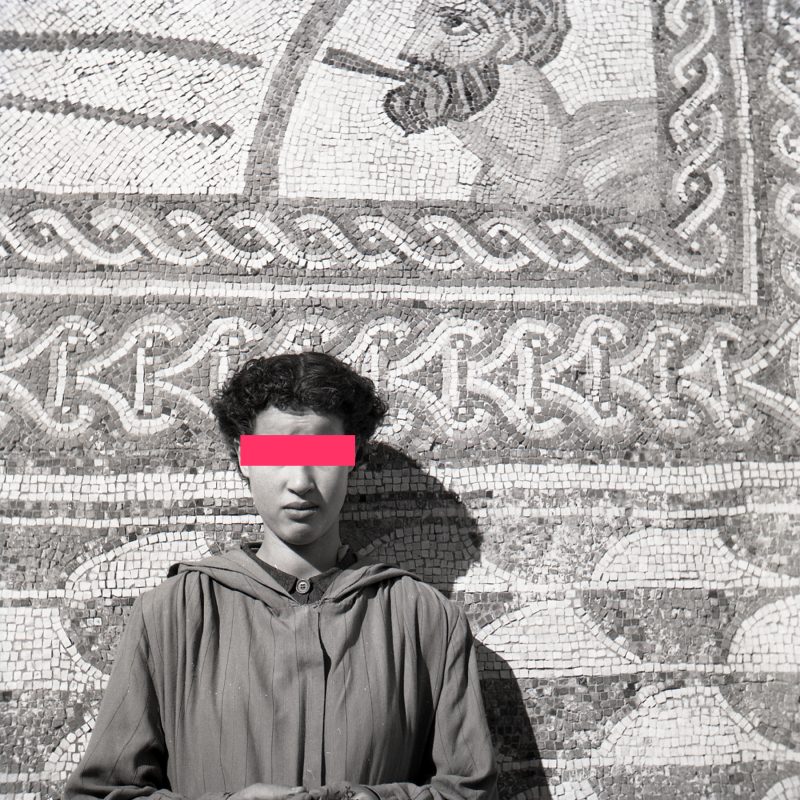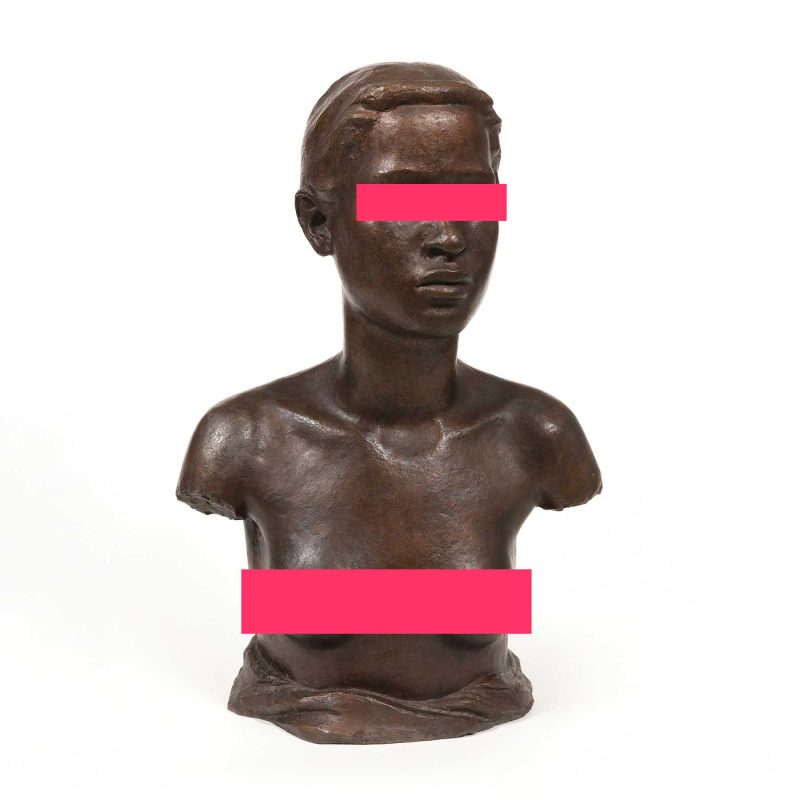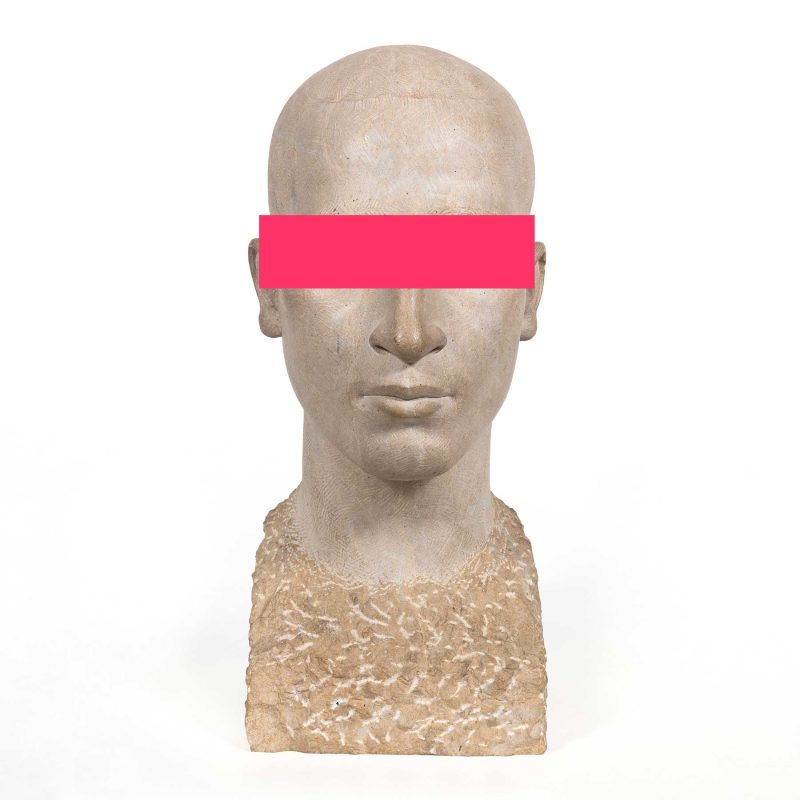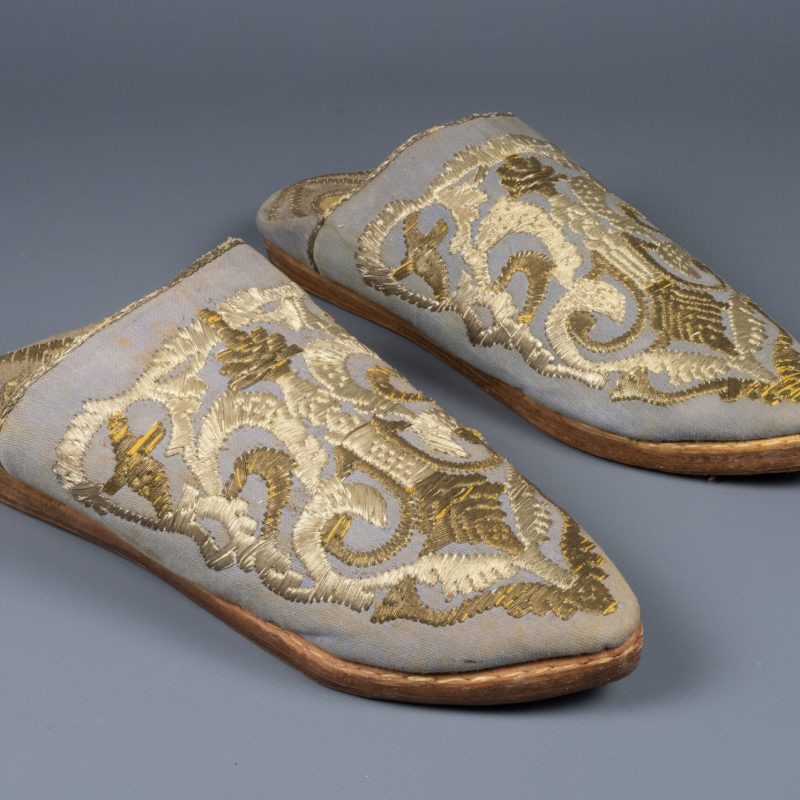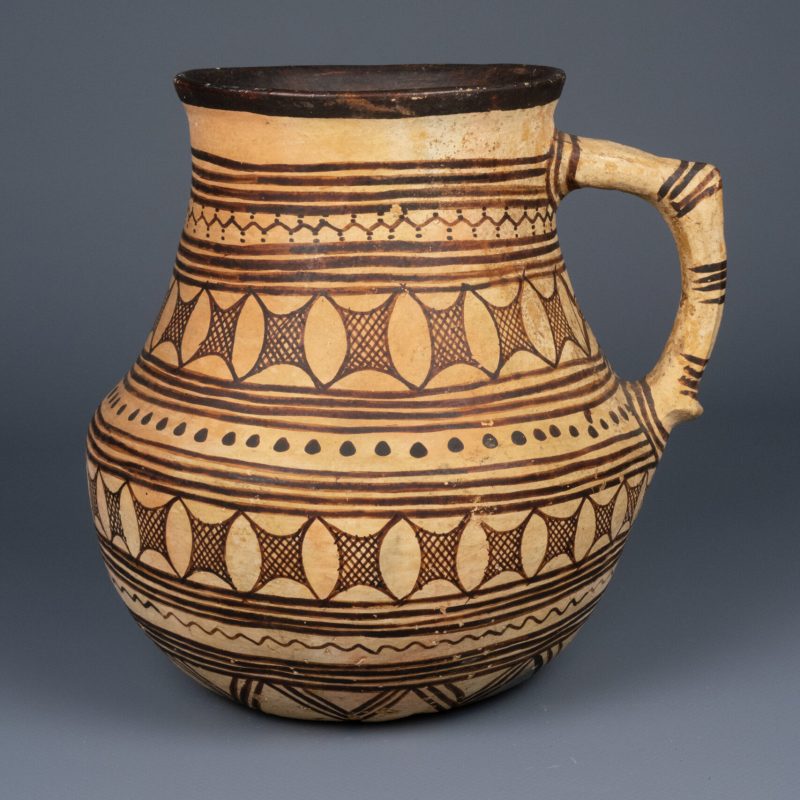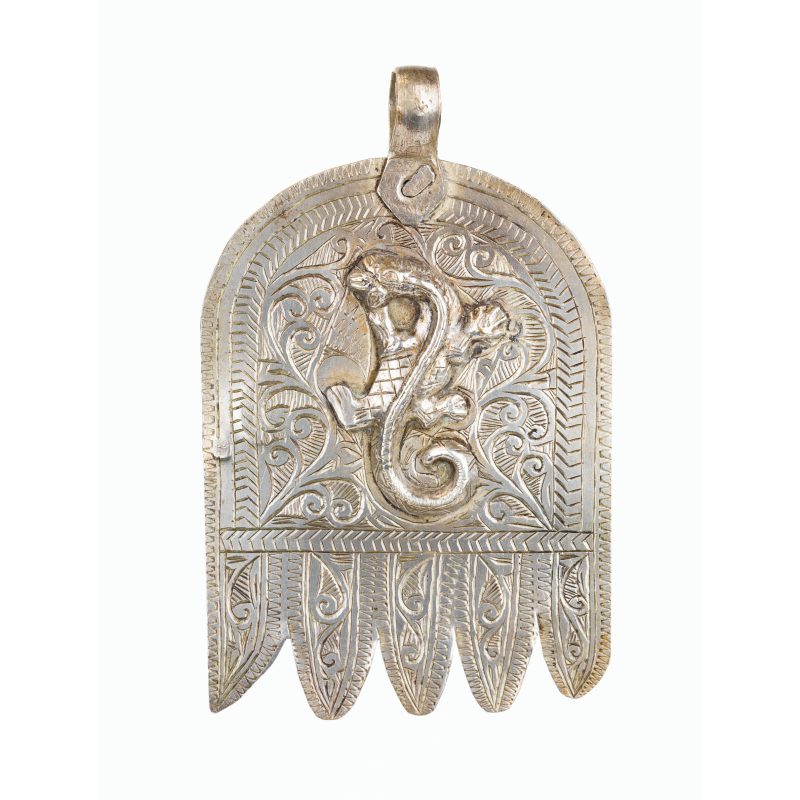Summary of results
This is a photograph taken, quite plausibly by Eudald Serra, in the prison of Nador, in the Eastern Rif, probably on 24 April 1954, as part of the second MEC expedition to the northern part of the Spanish Protectorate in Morocco. Several inmates, probably punished for having become pregnant out of wedlock, were sentenced to between two and three years, with their corresponding children. The expeditionaries made systematic use of this type of ‘total institutions’ in their search for models for Serra’s ‘anthropological sculptures’.
In the case of this cliché, there are two girls whom Panyella and Serra would meet again—and photograph—between December 1955 and January 1956, in the Muslim women’s reformatory in Tétouan.
Chronological reconstruction of provenance
This is a photograph of female inmates in Nador prison. Two of them are facing the camera, posing, a third on the left holding her child, and half of the body of another, still further to the left. Unlike other women portrayed in the Nador prison, in this case the two people we can see in the foreground look much younger than the rest.
Thanks to Eudald Serra’s travelogues, we have precise dates that allow us to situate the photograph and its context. In fact, in the context of the second expedition to the northern part of the Spanish Protectorate in Morocco (April 1954), Serra mentions the initial visit to the women’s prison in Nador on 23 April, through Mr. Mendoza, then director of the institution, who offered him all the necessary facilities in his search for sculptural models. Serra goes on to say that he decided on one of the female models to make a bust, and gives some details of her biography, as well as of the process of confinement, which is very significant:
‘She is from a nearby berber tribe and is there for illegitimate pregnancy, like most of them, except one called the corporal, who is there for being an accomplice in a crime that happened twelve years ago. The penalty for illegitimate pregnancy ranges from two to three years for single women and from five to seven for widows and six for divorced women’ (Serra, Travel Journals, 1947–1991).
Serra also provides valuable information to identify the date on which the photograph was taken; the following day, 24 April, he opens his diary as follows:
‘I attend nine o’clock mass and then go to the prison to continue the head. First, I try to take some photographs in the prison yard. At the moment, only a few of them want to be photographed. Afterwards, they all put on the best clothes they have and ask me to please take their pictures’ (Serra, Travel Journals, 1947–1991).
We can therefore assume that the photograph in question was taken on 24 April, in the courtyard of the women’s prison in Nador. If we are to believe Serra, this series of photographs would have been taken with a certain wilfulness on the part of the women, who wanted to appear in the best possible appearance.
In any case, the most significant aspect of the photograph, in relation to the crude description provided by Serra, is precisely the severity of the punishment to which young women who became pregnant out of wedlock were subjected, with prison sentences of two to three years. They were accompanied by any children they may have had previously or while serving their sentence Also the fact that, if we look at the clichés corresponding to the photographs taken in the Muslim women’s reformatory in Nador (nos. 2590-2597, 2704, 2705, 2707, 24005-24008), and in particular cliché 2593, we see that the two girls would be portrayed again by Eudald Serra at a later date, probably on 3 January 1956, this time in the Muslim women’s reformatory in Tétouan. It is impossible to know what judicial procedure justified the transfer of both girls to serve a sentence from the women’s prison in Nador to the reformatory in Tétouan. In any case, this also caught the attention of Serra himself, who referred to it explicitly in his diary of 31 December 1955:
‘At seven o’clock we go to see Mrs. Colomer, director of the reformatory for girls in Tétouan, duly recommended by Tomás García Figueras. She has all the girls lined up, among them I discover the one whose bust I did last year and two of the girls who were in the Villa Nador prison’ (E. Serra, Travel Journals, 1947–1991).
The institutional itinerary of the girls portrayed in the photograph could only be traced by having access to the inmate files of both institutions, although unfortunately this has not been possible so far, pending further discoveries in the General Archive of the Administration of Alcalá de Henares.
We are not aware that the photograph in question has been used in any of the exhibitions that the MEC/MEB/MuEC has devoted to Morocco over the years. If the provenance research is correct, the photograph would have been added to the MEC collection in May 1954, like the rest of the photographs in the collection.
Estimation of provenance
Nador (in tarifit ⵏⴰⴹⵓⵕ; in Arabic الناظو), Eastern Rif, Morocco
Possible alternative classifications
Regarding the instructions for the inventory, it should be noted that the two girls in the photograph also appear in the photographs taken a year and a half later at the Muslim women’s reformatory in Tétouan.
As for the museographic information on the piece, the existence of the women’s prison in Nador as a place of confinement to which Eudald Serra systematically resorted in search of models for the ‘anthropological sculptures’ he made on behalf of the museum should be made clearer.
Complementary sources
Archives:
Arxiu del Museu Etnològic de Barcelona
Arxiu Panyella-Amil, caixa A7, expedient 5
MEB, L128 05 02
MEB, L128 06 07
MEB, L128 07 01
MEB L128 07 02
MEB, L128 07 06
Fundació Folch de Barcelona
Eudald Serra. Cuadernos de viaje, 1947-1991
Bibliography:
Etxenagusia Atutxa, B. (2018). La prostitución en el Protectorado español en Marruecos (1912-1956) (tesi doctoral). Barcelona: Universitat Pompeu Fabra.
Huera, C., i Soriano, D. (1991). Escultures antropològiques d’Eudald Serra i Güell. Barcelona: Fundació Folch i Ajuntament de Barcelona.
Mathieu, J., i Maury, P. H. (2013). Bousbir, la prostitution dans le Maroc colonial: ethnographie d’un quartier reserve. París: París-Méditerranée.
Mbembe, A. (2001). On the postcolony. Berkeley: University of California Press.
Taraud, C. (2003). La prostitution coloniale. Algérie, Maroc, Tunisie (1830-1962). París: Payot.
Valderrama, F. (1956). Historia de la acción cultural de España en Marruecos, 1912-1956. Tetuan: Marroquí.

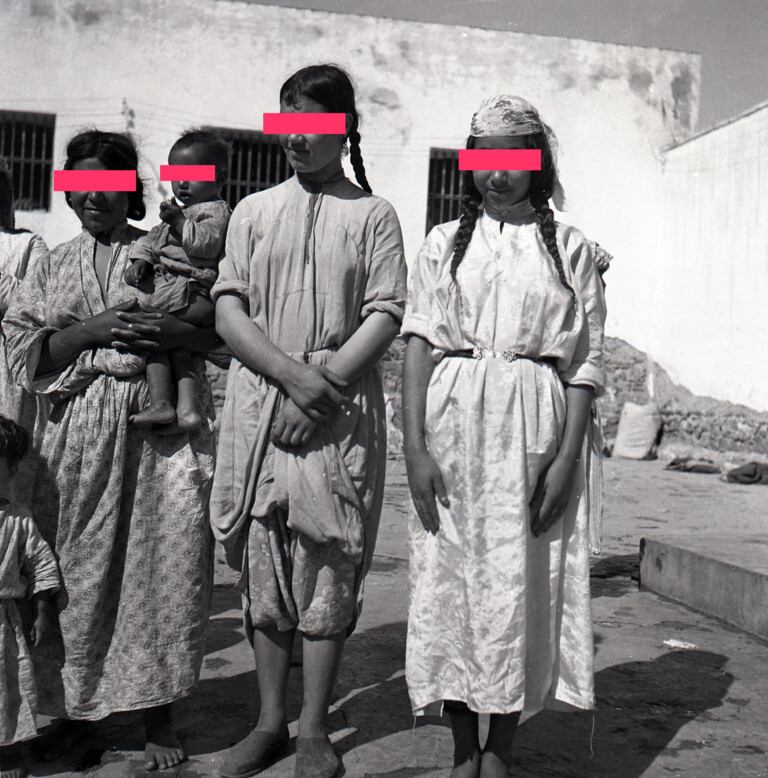
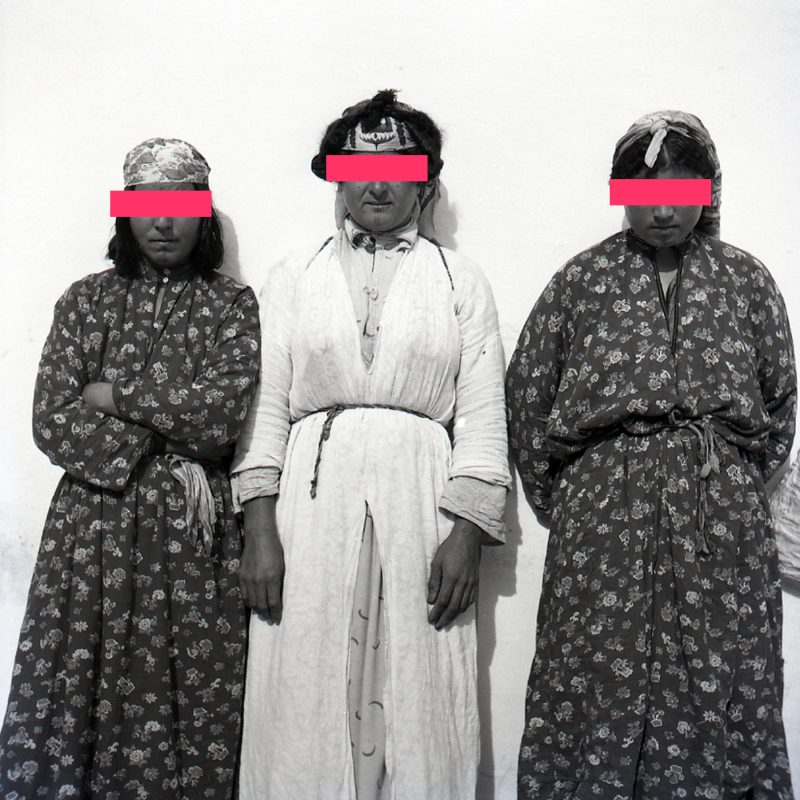
![2768v2 Sr. Serra modelant cap berber al taller del fotògraf [sic]; Xauen](https://trafricants.org/wp-content/uploads/elementor/thumbs/2768v2-1-r1s3naz0e9jpfdk332eci3myow1y18s3l4ttuptphc.jpg)
